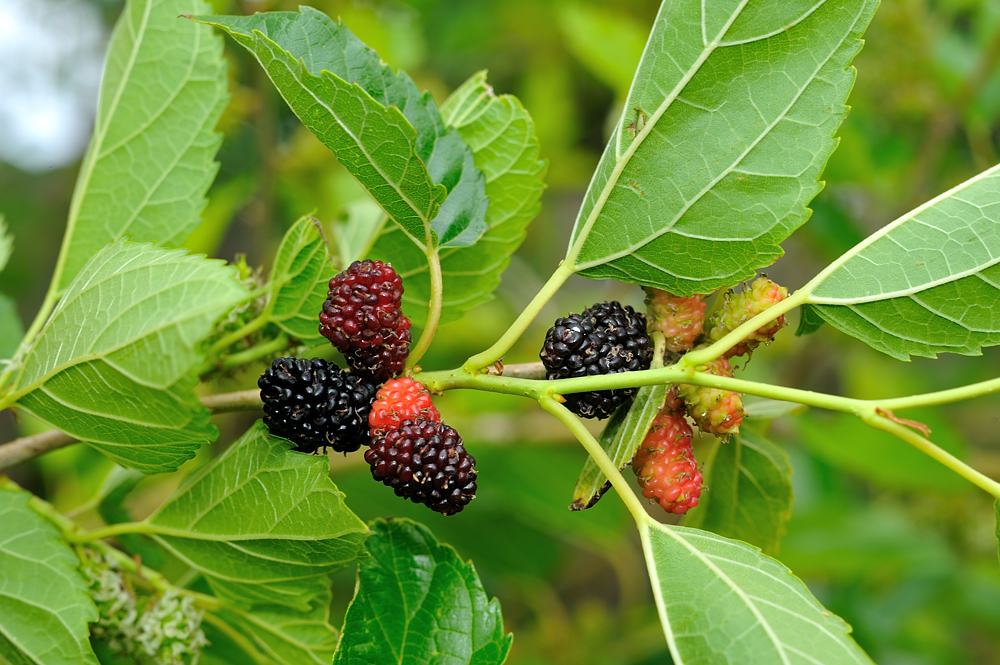Mulberries bush
(Mulberries bush)

Description
Morus, a genus of flowering plants in the family Moraceae, comprises 10–16 species of deciduous trees commonly known as mulberries, growing wild and under cultivation in many temperate world regions. The closely related genus Broussonetia is also commonly known as mulberry, notably the paper mulberry, Broussonetia papyrifera. Mulberries are fast-growing when young, but soon become slow-growing and rarely exceed 10–15 metres (30–50 ft) tall. The leaves are alternately arranged, simple and often lobed and serrated on the margin. Lobes are more common on juvenile shoots than on mature trees.[citation needed] The trees can be monoecious or dioecious. The mulberry fruit is a multiple fruit, approximately 2–3 cm (3⁄4–1 1⁄4 in) long. Immature fruits are white, green, or pale yellow. In most species the fruits turn pink and then red while ripening, then dark purple or black, and have a sweet flavor when fully ripe. The fruits of the white-fruited cultivar are white when ripe; the fruit of this cultivar is also sweet, but has a mild flavor compared with darker varieties. The fruit of the white mulberry – an East Asian species extensively naturalized in urban regions of eastern North America – has a different flavor, sometimes characterized as refreshing and a little tart, with a bit of gumminess to it and a hint of vanilla. In North America, the white mulberry is considered an invasive exotic and has taken over extensive tracts from native plant species, including the red mulberry. The ripe fruit is edible and is widely used in pies, tarts, wines, cordials, and herbal teas. The fruit of the black mulberry (native to southwest Asia) and the red mulberry (native to eastern North America) have the strongest flavor, which has been likened to 'fireworks in the mouth'. The fruit and leaves are sold in various forms as nutritional supplements. The mature plant contains significant amounts of resveratrol, particularly in stem bark. Unripe fruit and green parts of the plant have a white sap that may be toxic, stimulating, or mildly hallucinogenic.
Taxonomic tree:







